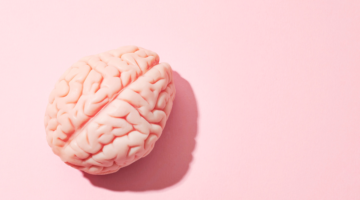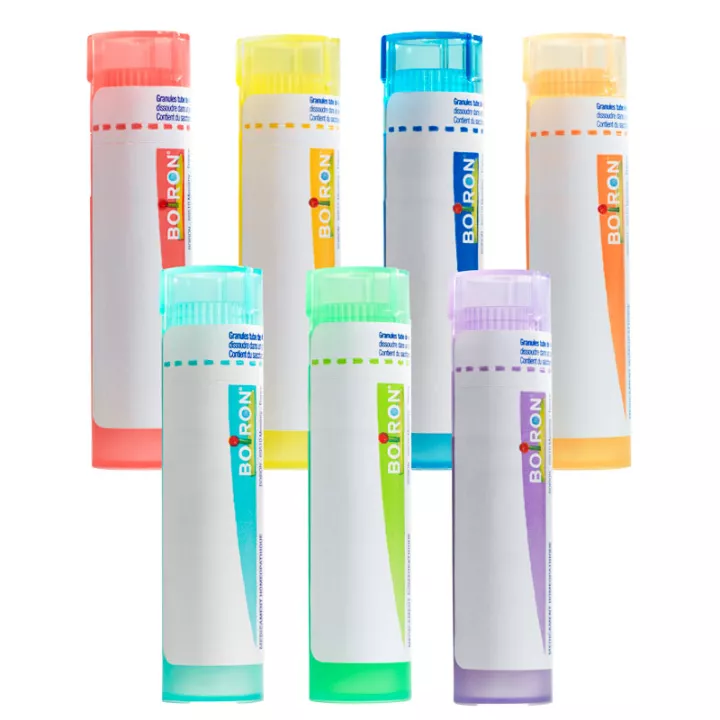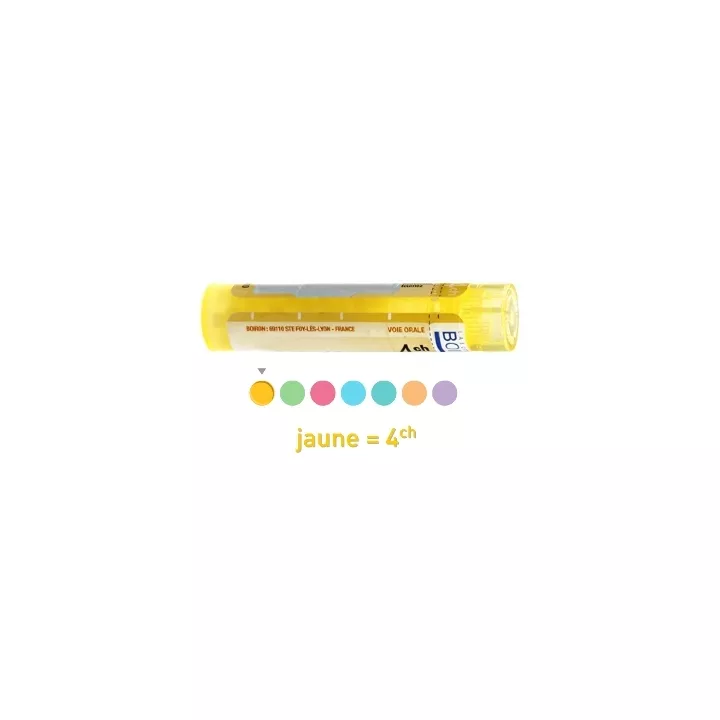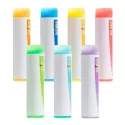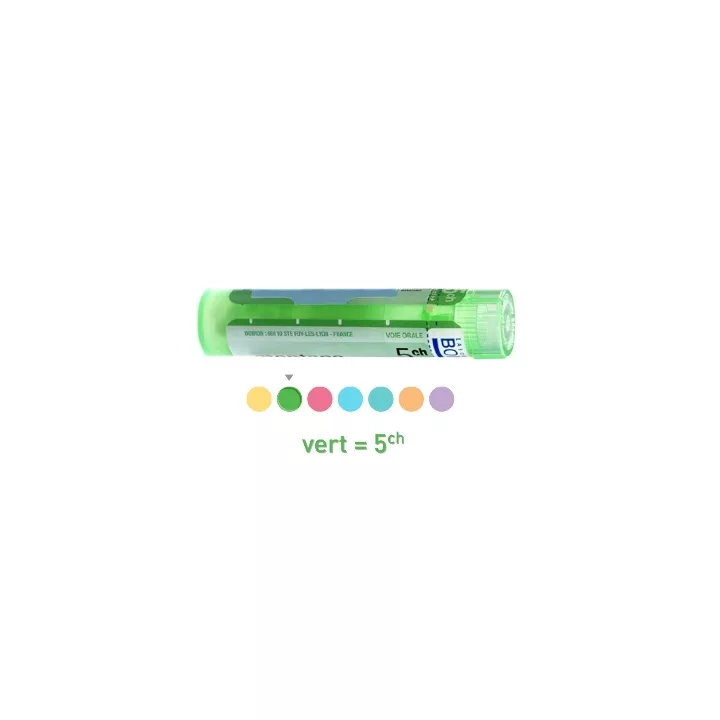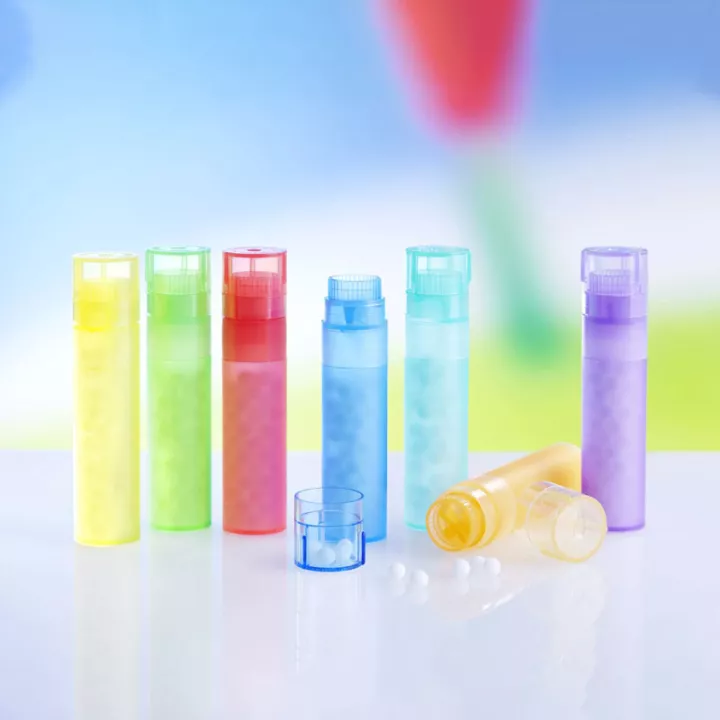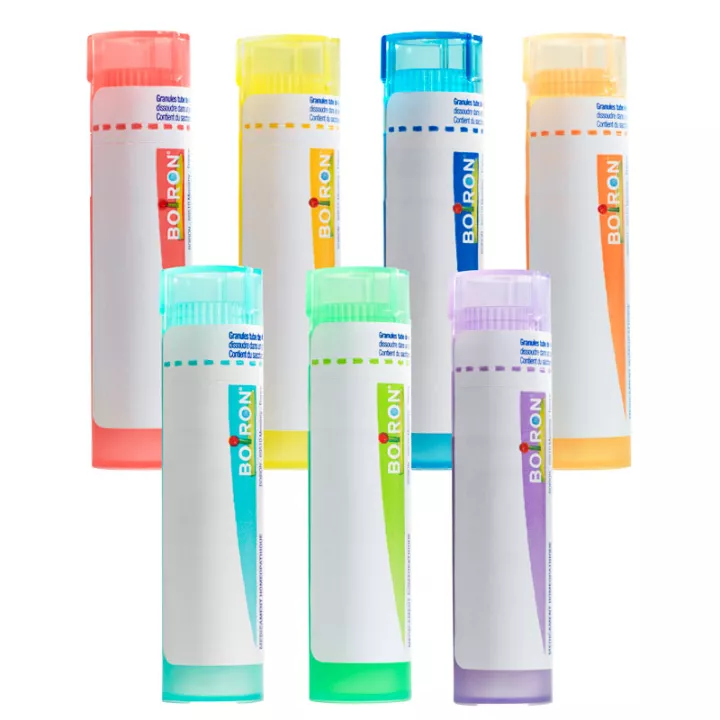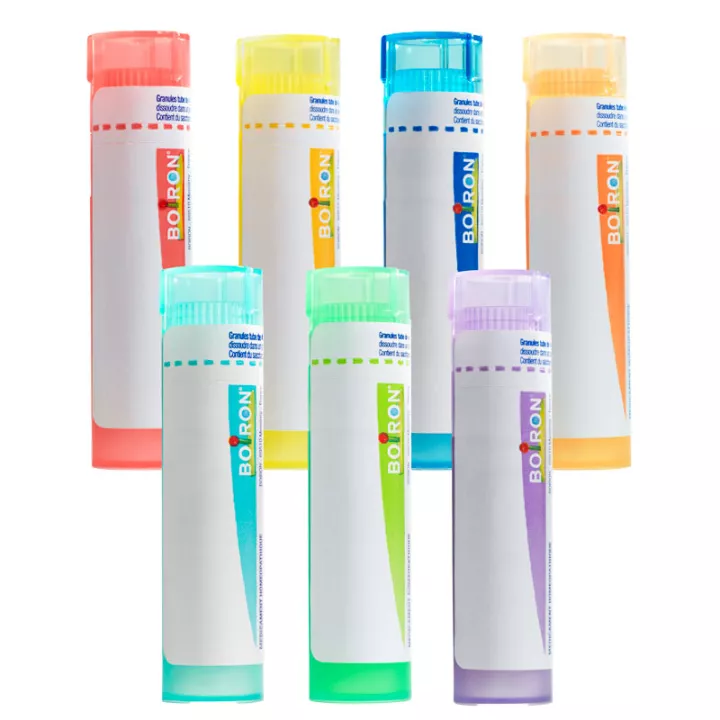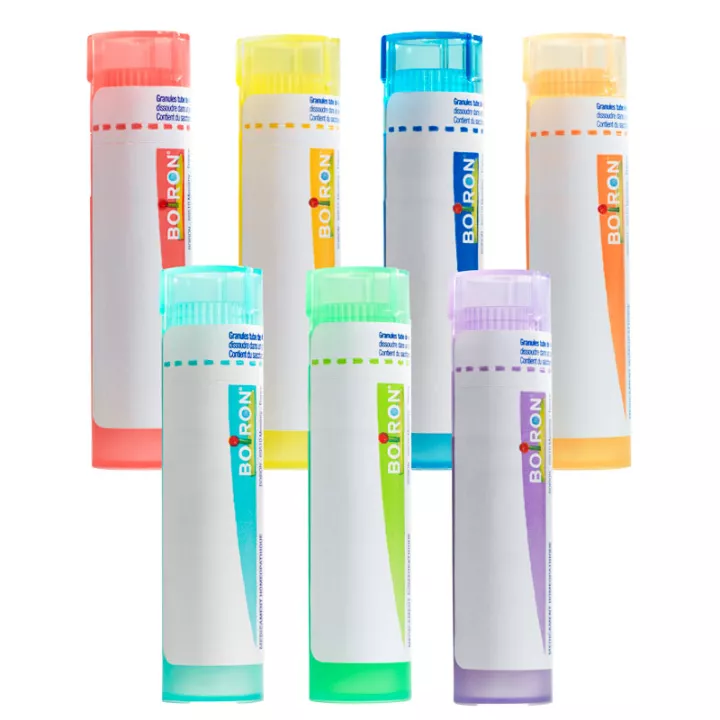Glonoinum: An Essential Homeopathic Remedy for Heart Problems and Menopause
GLONOINUM 4CH, 5CH, 7CH, 9CH, 15CH, 30CH Boiron homeopathic granules
Registered medicine: EH00356
Origin : Synthesis
Available in Korsakovian dilutions of 200K, 1,000K, 10,000K
Glonoinum is a homeopathic solution made from trinitrin, a colorless, oily substance. This remedy stands out for its ability to effectively treat certain cardiac conditions, specifically extrasystoles, which manifest as irregular heartbeats. In addition to these primary symptoms, Glonoinum offers relief for a variety of associated symptoms, reinforcing its usefulness in the treatment of cardiac disorders.
Use in Cardiology
Extrasystoles are heart rhythm abnormalities often perceived as palpitations or interruptions in the heartbeat. Glonoinum is particularly effective in alleviating these disturbances and restoring a feeling of a more regular heartbeat. In homeopathy, dosage specificity is crucial, and Glonoïnum is no exception. Each case of cardiac disorder may require an adapted dosage, essential for maximizing treatment efficacy.
Advantages in gynaecology
In gynecology, Glonoinum is frequently recommended for women going through menopause. During this phase, many women suffer from hot flushes and other uncomfortable symptoms. Glonoinum helps to moderate these symptoms, enabling women to better manage the discomforts associated with menopause. This homeopathic remedy can therefore be adapted to offer greater comfort during this significant life change.
Therapeutic indications in homeopathy
Homeopathic remedies can be used for a variety of symptoms, so it is not possible to determine the indications and dose of a specific preparation.
The homeopathic physician selects the appropriate medicine, dilution and dosage according to the patient's condition and characteristic symptoms.
Glonoinum: A Homeopathic Remedy for Cardiac and Gynecological Conditions
Use in Cardiology
Glonoinum, available as homeopathic granules from Boiron in various dilutions, is a homeopathic remedy commonly used to treat cardiovascular disorders such as ischemic strokes, extrasystoles and palpitations. This remedy helps regulate blood circulation and reduce the symptoms associated with these heart conditions.
Benefits in gynaecology
In gynecology, Glonoinum is particularly effective in alleviating hot flashes in menopausal women. The drug offers significant relief from symptoms associated with hormonal fluctuations, enabling a more comfortable transition through menopause.
Indications for clinical signs
Symptoms treated with Glonoinum are generally aggravated by radiant heat, shaking and alcohol intake. They are improved by cold or by applying a cold compress around the head, which can relieve tension and painful symptoms.
Directions for use for best results
For optimum use of Glonoinum, we recommend taking 5 granules in the appropriate dilution (4CH, 5CH, 7CH, 9CH, 12CH, 15CH, 30CH, 200K, 1000K), as required or as recommended by a healthcare professional. Granules should be taken away from meals for optimal absorption.
Other therapeutic applications
Glonoinum is frequently prescribed for symptoms associated with vascular problems and cardiac disorders, such as :
- Headaches and Migraines: Particularly effective for headaches that are aggravated by heat or sun exposure, often described as pulsating or explosive.
- Angina attacks: Used to relieve chest pain due to angina, characterized by a sensation of constriction and pain radiating to other parts of the body.
- Hypertension: Can help manage the symptoms of hypertension, notably sensations of fullness and pulsation in the head and neck.
- Heat and sunstroke symptoms: Effective against disorders caused by excessive exposure to heat, including heat stroke and sunstroke symptoms.
Recommended Glonoinum dosages for Cardiac and Gynecological disorders
Cardiology: treatment of cardiac disorders
In the case of cardiac disorders such as extrasystoles and palpitations, take 5 granules of Glonoinum 5 CH at the onset of symptoms. If these cardiac disorders are accompanied by hypertension, dizziness or headaches, a dosage of 5 granules of Glonoïnum 9 CH, twice a day, is preferable for effective management of these symptoms.
For more serious cases, such as the treatment of ischemic vascular accidents, the recommended dosage is 5 granules of Glonoïnum 15 CH every four hours. This frequency helps maintain an appropriate level of medication to counter the effects of this serious condition.
Gynecology: Managing menopausal symptoms
In gynecology, particularly for menopausal hot flashes, 5 granules of Glonoïnum 9 CH are recommended as soon as the first symptoms appear. For women experiencing more intense symptoms, a higher dosage, such as Glonoïnum 15 CH, may be required. It is important to administer this treatment as soon as hot flushes appear, to alleviate discomfort quickly and effectively.
Hot flushes accompanied by a headache: if the hot flush is associated with a headache, migraine or chest constriction, and at the same time causes palpitations, take 5 granules of Glonoinum 5 CH as soon as the symptoms appear.
Directions for use
Do not touch homeopathic granules with your fingers. Use a mint-free toothpaste (such as Homéodent Boiron, which is compatible with homeopathic granules).
Hot flushes accompanied by headache: If the hot flush is associated with a headache, migraine or chest constriction, and at the same time causes palpitations, take 5 granules of Glonoinum 5 CH as soon as symptoms appear.
How long does it take to see an improvement with Glonoinum?
Improvement may vary according to the individual and the severity of symptoms. However, effects can often be seen after a few days or weeks of regular use.
Are there any side effects to using Glonoinum?
Glonoinum is generally well tolerated and side effects are rare in homeopathy. However, in the event of unusual reactions, it is important to consult a health professional.
Can Glonoinum be used in conjunction with other medical treatments?
Yes, Glonoinum can be used as a complement to other treatments, but it is essential to consult a healthcare professional to ensure there are no drug interactions.
Is Glonoinum suitable for all ages?
Glonoinum can be used by people of different ages. However, consultation with a healthcare professional is recommended to confirm dosage and suitability of treatment, particularly for children and the elderly.
Conditions associated with Glonoinum
Glonoinum is particularly indicated for the treatment of the following conditions:
- Hot flushes: often used in women going through menopause.
- Headache: Can relieve various types of headache, including those related to tension.
- Extrasystole: Treats irregular heartbeats.
- Hypertension: Helps manage high blood pressure.
- Palpitations: Used to calm palpitations and associated anxiety.
- Paroxysmal tachycardia: Treats sudden episodes of accelerated heart rate.
Treatments associated with Glonoinum
Glonoinum is often used in synergy with other homeopathic remedies to treat a variety of symptoms and conditions. Associated treatments include:
- Aconitum Napellus: Used for shock, sudden fever and panic symptoms.
- Ambra Grisea: Recommended for anxiety and sleep disorders.
- Amylium Nitrosum: Effective against hot flashes and hypertension.
- Asterias Rubens: Often prescribed for breast disorders and certain nervous disorders.
- Aurum Muriaticum: Treatment for depression and certain heart problems.
- Belladonna: Indicated for fever and inflammation.
- Digitalis Purpurea: Used for heart problems, especially heart failure.
- Folliculinum: Helps regulate hormonal imbalances in women.
- Graphites: Recommended for skin and digestive problems.
- Ignatia Amara: Treats emotional stress and nervous disorders.
- Kalium Carbonicum: Useful for respiratory disorders and general weakness.
- Lachesis Mutus: Frequently used for circulatory and menopausal disorders.
- Lilium Tigrinum: Used to treat gynecological disorders.
- Lycopus: Indicated for thyroid and heart problems.
- Nux Vomica: Used for digestive disorders and stress-related symptoms.
- Sanguinaria Canadensis: Effective for respiratory problems and certain types of headache.
- Sepia Officinalis: Used for various gynecological and mood disorders.
- Sulfur: Indicated for skin problems and digestive disorders.
Packaging and contents
Glonoïnum, known as nitroglycerin in conventional medicine, is a homeopathic remedy of synthetic origin used to treat symptoms associated with vascular and cardiac disorders. Listed in the French and European Pharmacopoeia, and registered under number EH00356, this remedy is available in a variety of forms and dilutions, enabling flexible, targeted use. This article explores the profile, preparation and therapeutic applications of Glonoïnum in homeopathy.
Origin and properties
Glonoïnum is a homeopathic preparation of nitroglycerin, a substance originally used for its explosive but also medicinal properties, notably in the treatment of angina pectoris. In homeopathy, its effects are used to address similar symptoms in a subtle, energetic way.
Forms of preparation
Doses and tubes: Glonoïnum is available as granules in tubes with potencies from 4 CH to 30 CH, as well as in single doses for occasional treatments from 5 CH to 30 CH. These different dilutions enable us to adapt the product to patients' specific needs and sensitivities.
Magistral preparations: In addition to standard dilutions, Glonoïnum is also available in magistral preparations, allowing Hahnemannian dilutions from 3 CH and Korsakovian dilutions from 200K to 10,000K. These options offer great flexibility for prescribers wishing to adapt the remedy to specific cases.
Precautions for use
Warning
Contains sucrose.
Giving homeopathic granules to babies and children
For granules or alcoholic drops, dissolve in 100ml of water. As granules take a long time to dissolve, it is necessary to prepare your mixture in advance.
Homeopathy and pregnancy
Homeopathic medicines have no chemical toxicity, no contraindications, no interaction with other drugs, and no adverse effects linked to the quantity of product ingested. Pregnant women can use homeopathic remedies without any known risk to themselves or their unborn child, but it is advisable to seek advice.
Frequency of homeopathic use
For acute conditions, homeopathic remedies should be taken every hour until symptoms improve. From then on, they should be taken 3 or 4 times a day, spaced out, and then gradually stopped.
For chronic conditions, low-dilution remedies (> 9CH) should be taken 1 or 2 times a day, while basic remedies should be taken once a week, or even once a month. This decision is left to the homeopath.
What to do if there is no improvement within 24 hours
Certain pathologies cannot be treated with homeopathy simply by self-medication. Their seriousness requires medical advice, which can be given by a homeopathic doctor. This doctor will judge whether your condition can be treated with homeopathy alone, or whether your treatment needs to be supplemented with allopathic medicine.
